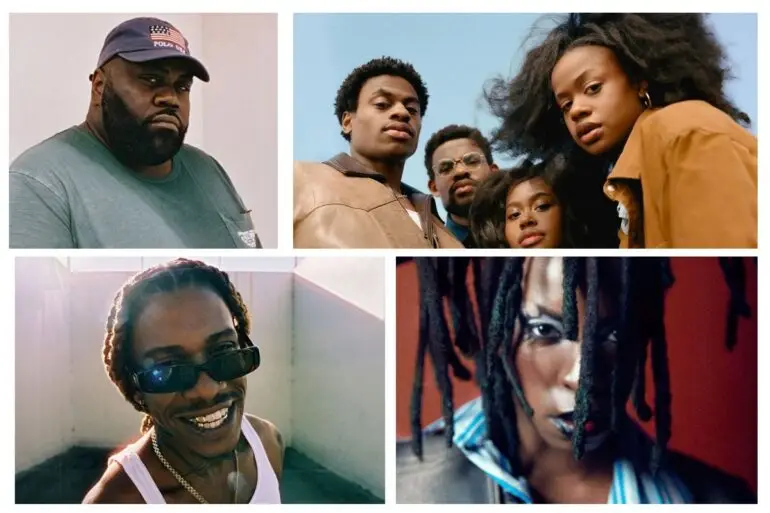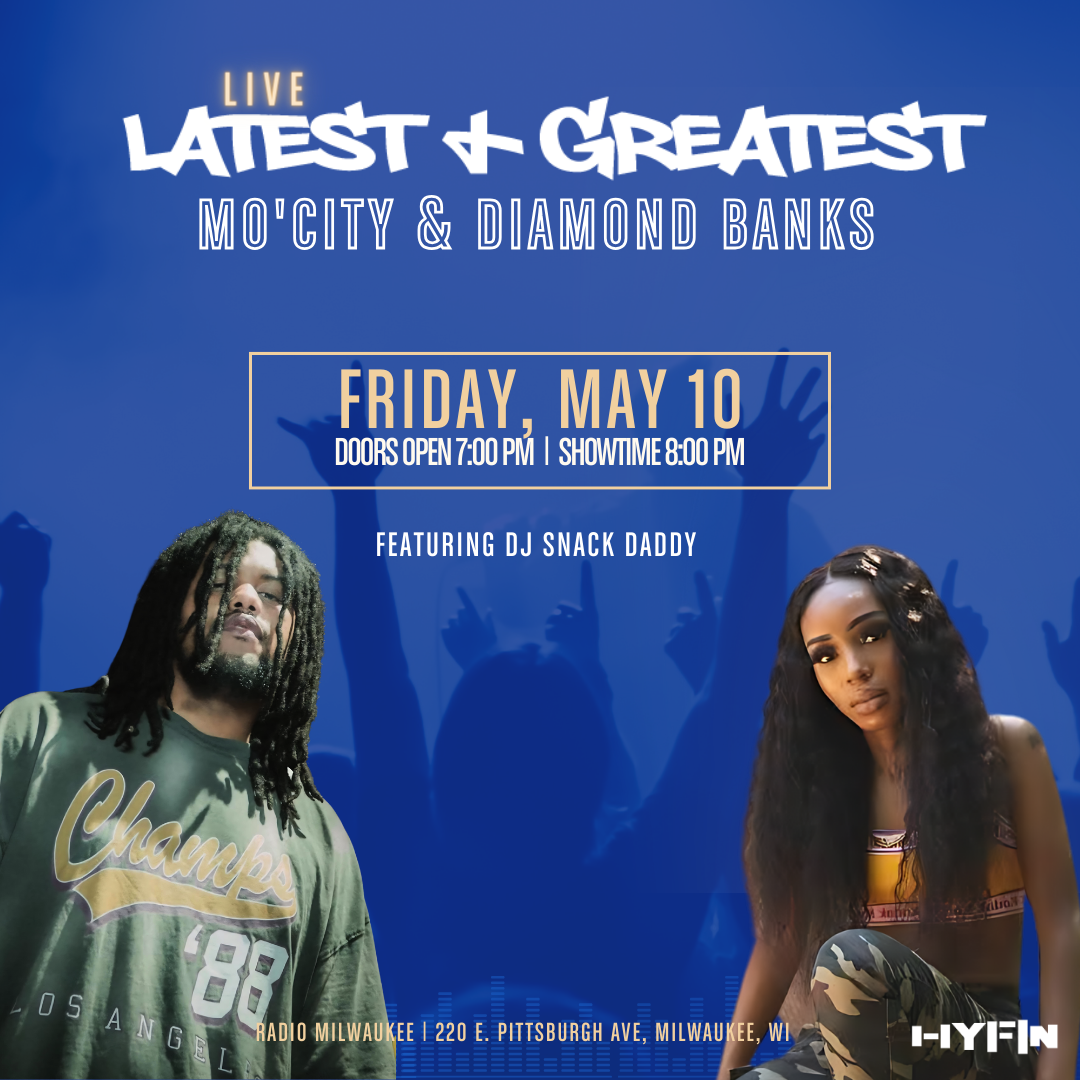When we think of the Civil Rights Movement, opulent parties are probably not the first thing that come to mind. But it turns out, they were a big part of the fight for racial justice — especially the events organized by Black socialite Mollie Moon in the 1940s, ’50s and ’60s.
Known as one of the most influential women of the civil rights era, Moon served as president of the fundraising arm of the National Urban League and is credited with raising millions to build economic and racial equality in the U.S. But historian Tanisha Ford says she only heard of Moon accidentally, while doing research for another project.
“I stumbled across the name Mollie Moon in the newspaper clippings of the early 1960s. … She was hosting this amazing beauty pageant that celebrated the beauty of Black women,” Ford says. “So I just tucked her name in the back of my mind and thought, ‘I’m going to write something about this woman.’ “
As Ford gathered press clippings about Moon, she realized there was a larger story to be told, “one that made people aware of this great leader of the Civil Rights Movement who had fallen out of the narrative.”
Moon’s New York City parties attracted stars like Billie Holiday and Josephine Baker, as well as wealthy white donors, Black elites and working class Black people. But Moon faced criticism from activists who were skeptical of taking money from rich white liberals.
“What African Americans feared was that that kind of influence would then steer the movement away from the issues that African Americans cared about and … toward issues that felt safe for white Americans,” Ford says.
Ford notes that debates about money, influence and social justice are still relevant today. But, she adds, fundraising is a crucial — and often-overlooked — part of the Civil Rights Movement.
“I have found that once I started to turn my attention to the money, that this story humanizes these people even more, and it makes the stakes of movement building all the more clear,” Ford says.
These parties, by all accounts, were fabulous. Her signature event was the Beaux Arts Ball. She would host that event every year since 1940, and it was an event that started off in Harlem at the Savoy Ballroom and then moved in the 1960s, the early 1960s, to the Astoria Hotel in midtown New York. And these events brought together all sorts of people, as you mentioned, everybody from weary subway workers and domestic laborers to titans of industry, including the Rockefeller family, people like Billie Holiday. Katherine Dunham at one point was a sponsor for the event. I even found in the records where she had invited the Duke and Duchess — the former king of England [Edward VIII] and Wallis Simpson — to be judges for the costumed affair portion of the Beaux Arts Ball.
They were funding everything from voter registration drives to things like the March on Washington, but also Black youth programs. Mollie Moon’s degree was in pharmacy, and before she went into social work, which became her long-term career, she had a dream of becoming a biology teacher. So she was deeply invested in what today we call STEM. And so a lot of the funds went toward funding Black youth, for them to have educational programs. And then other things funded journalists. So their fundraising efforts funded a wide array of social-justice oriented, racial-equality-minded events that have had a deep impact on community building in the African American context.
[Scott] does represent that generation of younger, more radical Black journalists who are saying, “Hey, wait a minute. We have to remember that the wealth that the Rockefellers and others of these elite families who are clamoring to support the National Urban League have amassed has come from a system of slavery.” … And Lillian Scott was saying we should not be seduced by the fancy gowns and invitations to party in the Rainbow Room because African Americans, by and large, are still living in abject poverty in this nation. And a fancy party is not going to undo generations of economic disparities. So she … would use her column in the Chicago Defender to talk about these issues of race and class and gender and really discuss them in a complex way, but using the cheeky form of the society pages to do it. So her columns are a true gem in terms of understanding the nuances of these race and class dynamics in the mid-20th century.
One of the concerns then, that remains now, is that there shouldn’t be an accumulation of wealth to begin with, but that even funneled into movements that oftentimes creates a kind of stagnation where the money isn’t being then redistributed to the communities that need it most. So there is a structural issue in terms of how we even approach fundraising for the movement: Who gets the money and what kind of time period is considered acceptable for the money to be redistributed to Black communities? So that concern was definitely there.
The other piece of that is, well, once the moment passes, if we have become dependent upon this white hand of philanthropy, then what do we do then when white people decide that they no longer want to give this money to our cause? And this is another thing that we’ve seen play out in the present moment, where in 2020 there was a surplus of money being given to organizations like BLM and the National Urban League and the NAACP, who received even more money than BLM did, to be clear. But what happens in 2021, 2022, 2023, where we start to see a retrenchment in terms of the kinds of money that’s being given to racial justice, almost to the point now where saying “racial justice” is like a dirty word, even though it was so en vogue just a couple of years ago?
The longer I sat with Mollie Moon’s archive — with her letters, with her personal keepsakes, looking at photographs of her — I realized just how brave this woman had to be to be so unapologetically herself in a time period where Black people were being persecuted daily, for the color of their skin. And if there is anything that I think Mollie Moon would want us to know, it is that every human being on this earth deserves to be able to walk in the fullness of themselves in the fullness of their humanity. And I think that her mission of Black joy, a Black joy that so contagious that everyone in the world would benefit from that kind of joy, is one that really resonates today. That if we could just step outside of ourselves long enough to recognize the suffering of someone else and be willing to sacrifice something of ourselves, whether that be a small dollar financial offering, whether it be volunteering our time, whether it be calling a congressperson, that if we were willing to do that for someone else, then we have the power to make the kind of change that we need to see in this world.
Transcript :
TONYA MOSLEY, HOST:
This is FRESH AIR, and I’m Tonya Mosley. Let’s go to New York City. The year is 1948, and one of the most opulent parties of the summer is underway on the 65th floor of the Rockefeller Center, inside of the exclusive Rainbow Room. Billie Holiday graces the stage, singing a stirring rendition of “Strange Fruit” to some of New York’s most powerful elite who are, for the first time, rubbing shoulders in midtown Manhattan with civil rights activists and members of the Black upper echelon to raise money for the National Urban League. The hosts are Win Rockefeller, grandson of oil magnate John D. Rockefeller, and Mollie Moon, a Black woman from Mississippi known as the Great Dame of Harlem Society.
Never heard of Mollie Moon? Historian Tanisha Ford hadn’t either until she happened upon her a few years ago. In Ford’s new book, “Our Secret Society: Mollie Moon And The Glamour, Money, And Power Behind The Civil Rights Movement,” Tanisha Ford shares the untold story of Mollie Moon, known as one of the most influential women of the civil rights era. As president of the fundraising arm of the National Urban League, Moon is credited with raising millions to build economic and racial equality in America. Tanisha Ford is a historian, cultural critic and author. She is a professor of history, biography and memoir at the Graduate Center, CUNY.
And Tanisha Ford, welcome to FRESH AIR.
TANISHA FORD: Thank you for having me.
MOSLEY: Well, thank you for being here. You know, this book about Mollie Moon, it’s so interesting, but really, we get to see through her story, what was this secret web of money and power and influence, all of which bolstered the Civil Rights Movement as we know it. How did you come to learn Mollie Moon’s story and ultimately decide to write about it?
FORD: I was actually doing research for another project, and I stumbled across the name Mollie Moon in the newspaper clippings of the early 1960s. And I just loved the sound of her name, Mollie Moon. I loved the way my mouth had to form to say her name. And she was hosting this amazing beauty pageant that celebrated the beauty of Black women. And, of course, in this era in America, that wasn’t necessarily common for our beauty to be recognized and celebrated in that way. And so I just tucked her name in the back of my mind and thought, I’m going to write something about this woman. And as I kept this file of documents about Mollie Moon that I would collect periodically, I realized that there was a true story to be told here, one that made people aware of this great leader of the Civil Rights Movement who had fallen out of the narrative, but also one about fundraising and how beauty pageants and galas and other social events were actually fundraisers for the movement.
MOSLEY: Right. You know, this is something I never really thought about is how the movement was funded. But your book illuminates – is that voter registration drives, breakfast programs, legal campaigns, all of this costs cash. I mean, it’s an obvious thing that we never really focus on when we’re talking about that era. It sounds like you had that epiphany, too.
FORD: I did, but admittedly, much later than I would have thought, or that one might think, given that I am a scholar of the Civil Rights Movement era. I realized once I started to follow Mollie Moon across the Black press that there were always dollar amounts attached to these stories about her. She raised $25,000 at this event. She raised $30,000 at another event. And I started to realize, oh, my goodness, these events are fundraisers. But because so much of the historiography or the way that we study the Civil Rights Movement did not focus on the money, I didn’t even realize that it was a blind spot in my own work that I had not been talking about the money, that historians don’t talk about the money, that as a nation, we don’t talk about how exactly we fund racial justice.
MOSLEY: Why do you think that is?
FORD: Well, I think it’s multifold. One reason is because money sounds dirty when we think about justice and freedom and liberation and democracy. We don’t think that those things should cost money. Another element of this, of course, is that when we start following the money, we might not like what we find out. Maybe we might find that some of our leaders whom we respect have capitulated to the interests of the white, capitalist elite, taking money from them. You know, we might find that people that we look to to represent the grassroots also have had to take money from some unsavory sources. And people don’t really want to talk about those things. You know, and there’s been a way in the public that we have lionized the leaders of the Civil Rights Movement, people like Martin Luther King, for example, who are worthy of our respect and admiration. I have found that once I started to turn my attention to the money, that this story humanizes these people even more, and it makes the stakes of movement building all the more clear.
MOSLEY: Well, let’s get into it. The book is called “Our Secret Society” because Mollie literally helped create a secret financial network of sorts, which included, as you mentioned, wealthy, rich, white donors, wealthy Black elites, and everyday, working-class Black people. And one way she did this was through parties. Everyone knew her name. Everyone wanted to be invited to these parties. Can you describe what some of these parties were like and who were those in attendance?
FORD: These parties, by all accounts, were fabulous. Her signature event was the Beaux Arts Ball. She would host that event every year since 1940, and it was an event that started off in Harlem at the Savoy Ballroom and then moved in the 1960s – the early 1960s to the Astoria Hotel in midtown New York. And these events brought together all sorts of people, as you mentioned, everybody from weary subway workers and domestic laborers to titans of industry, including the Rockefeller family, people like Billie Holiday, Katherine Dunham at one point was a sponsor for the event. I even found in the records where she had invited the Duke and Duchess, the former King of England…
MOSLEY: Wow.
FORD: …And Wallis Simpson to be judges for the costumed affair portion of the Beaux Arts Ball.
MOSLEY: Oh, this is so interesting. OK. So Mollie founded the fundraising arm of the National Urban League. She founded it in 1942. And then there were these guilds that were formed all across the country. What kinds of programs were these guilds funding?
FORD: They were funding everything from voter registration drives to things like the March on Washington, but also Black youth programs. Mollie Moon’s degree was in pharmacy, and before she went into social work, which became, you know, her long-term career, she had a dream of becoming a biology teacher. So she was deeply invested in what today we call STEM. And so a lot of the funds went toward funding Black youth for them to have educational programs. And then other things funded, like, journalists. So their fundraising efforts funded a wide array of social-justice oriented, racial equality-minded events that have had a deep impact on community building in the African American context.
MOSLEY: She played such a big role, as you’re laying out here, but by today’s standards, she kind of – she’s relatively unknown.
FORD: When we think about how grand narratives of U.S. history are told, a lot of the source material that is used in those grand, mainstream narratives of American history do tend to focus on mainstream publications like The New York Times, The Washington Post, The Boston Globe. But Mollie has even fallen outside of African American treatments of this history. And that, for me, was reflective of a larger issue or a larger historiographical, if you will, dynamic. And so I think part of it was that, especially once we get to the 1990s, African American historians and historians of the African American experience are really focused on telling the stories of the Black working, poor people who had definitely been neglected in the American narrative. And so, because of that bottom-up interest, people like Mollie Moon were kind of lumped into a Black middle-class elite, and the assumption was that women like her would have been committed and deeply invested to respectability and that they might have looked down upon the Black working classes. And so there was just not a focus on these women.
So I wanted to use everything that that history from the 1990s onward has taught us about race and class in the United States to say there’s a different way that we can tell a story about Mollie Moon that doesn’t really just lump her into this Black elite without having a critical question or conversation around what it meant to be middle class in the Jim Crow era. It wasn’t as cut and dry as the story of, like, respectability politics would suggest.
MOSLEY: Let’s take a short break. If you’re just joining us, my guest is historian and cultural critic Tanisha Ford, author of the new book “Our Secret Society: Mollie Moon And The Glamour, Money And Power Behind The Civil Rights Movement.” We’ll be right back after a short break. This is FRESH AIR.
(SOUNDBITE OF MUSIC)
MOSLEY: This is FRESH AIR. And today we’re talking to historian and cultural critic Tanisha Ford. Ford is a professor of history, biography and memoir at the Graduate Center, CUNY. She’s written a new book titled “Our Secret Society: Mollie Moon And The Glamor, Money And Power Behind The Civil Rights Movement,” which explores the fundraising efforts that supported the Civil Rights movement – luncheons, galas, card parties and traveling exhibitions – and the woman behind some of the most significant efforts, Mollie Moon, founder of the fundraising arm of the National Urban League.
I want to talk about this party that I mentioned earlier with Win Rockefeller. It broke the Jim Crow color line. And I want you to describe how big of a deal this party was and really what the breaking of that color line signified.
FORD: When Winthrop Rockefeller decides to sign his name on the invitations for this National Urban League summer party alongside Mollie Moon’s, these two made a very conscious decision. Winthrop knew that signing his name meant that he was saying that African Americans were on equal grounds as white Americans, and as such, they deserved access to every venue that white Americans had access to. And of course, the Rainbow Room was this very elite space where, you know, the white moneyed elite socialized and partied. And in 1948, the Rainbow Room had just reopened to outsiders after the war.
So for Winthrop and Mollie to decide, we’re going to take these African Americans dressed in their finest, and we’re going to march and sashay into the Rainbow Room, rarefied air, in Midtown Manhattan in 1948, it was quite the spectacle, and Mollie was very conscious of the optics of this. And, you know, having somebody like a Billie Holiday in the room performing – Billie Holiday, of course, deeply committed to the cause of racial justice – Mollie and Winthrop sharing a table.
MOSLEY: Well, how did Win Rockefeller and Mollie Moon actually meet, and what were his motivations? I mean, he was a rich socialite who could support anything.
FORD: Mollie and Winthrop met sometime after World War II, so I would presume around 1945 or 1946. At this point, Mollie has established the National Urban League Guild at the behest of Lester Granger, who is the executive director of the National Urban League at the time and also one of Mollie’s really good friends and comrades. And Winthrop has returned from the war. He’s reestablished himself in New York and has made it a point to separate himself from his family and their politics, which he sees as far more conservative than his own.
Even though his father and grandfather, too, supported racial justice, racial equality in various forms, Winthrop becomes the most outspoken of his generation, and of the Rockefellers more broadly, because he doesn’t believe in just tossing money down from the Rockefellers’ gilded cage. He believes that, I’m going to be on equal footing and organize alongside the African American community. And so they meet, have a common vision. In fact, I found mentions of Winthrop being at Mollie Moon’s house at planning meetings for the National Urban League Guild.
So he was very hands on, and he saw the National Urban League as a platform that he could support and very publicly throw his money behind, but also invest that kind of sweat equity by being present and invested in the planning of these events and fundraisers and spreading the word of the good work of the Urban League.
MOSLEY: This wasn’t all positive, though. I mean, this goes back to something that you mentioned earlier around concerns about aligning with wealthy white liberal elites. You write about this one journalist, Lillian Scott, who represented a younger generation of Black radicals using newspapers to publicly challenge capitalism and wealthy white liberals. This sounds really familiar. I mean, it sounds so current day, even talking about it. And she, Lillian Scott, had a particular focus on Win Rockefeller and his support of Mollie Moon.
FORD: Yes. And that’s why Lillian Scott is such an important figure, because she does represent that generation of younger, more radical Black journalists who are saying, hey, wait a minute. We have to remember that the wealth that the Rockefellers and others of these elite families who are clamoring to support the National Urban League have amassed has come from a system of slavery, right? So the term that we use to describe this is racial capitalism, and Lillian Scott was saying we should not be seduced by the fancy gowns and invitations to party in the Rainbow Room because African Americans, by and large, are still living in abject poverty in this nation, and a fancy party is not going to undo generations of economic disparities. So she really was on the Rockefeller beat. I mean, she would use her column in The Chicago Defender to talk about these issues of race and class and gender and really discuss them in a complex way but using the cheeky form of the society pages to do it.
MOSLEY: Well, there’s this one very salacious bit, to me. Once, when Rockefeller and Mollie started being photographed at these fundraising events together, people basically started losing their minds. There were all these rumors about them possibly having an affair, which, of course, is a sign of the times. But people just couldn’t wrap their heads around a Black woman having a platonic, professional relationship with a wealthy, white man, especially in the name of social and racial justice. But I mean, as you lay out in the book, this kind of gossip talk was also pretty dangerous because the time period, even for rumors to be out there of an interracial affair, it was just dangerous.
FORD: There were so many rumors. So many rumors. And I was less invested in trying to discover did this really happen? Were they really having an affair? As a historian, I was more interested in providing context for why there would have been so much fodder around this, and what were the stakes, you know? And what I discovered was that people did – they struggled with this idea that Mollie Moon just had that much influence, that, you know, she could just be doing this off of her own brilliance as – and strategy as a fundraiser. It’s also important to remember that both Winthrop and Mollie were married, and there were implications for their spouses who were thrown in the press as people started to question them and the nature of their relationships. And – but then there was also this larger racial context. I mean, we’re talking about the late 1940s. Lynching is at a high. There are conversations about the fears of miscegenation and race mixing. Black people are being killed for even looking at white people…
MOSLEY: Right.
FORD: …Much less being perceived as having sex with them. And I think the most poignant and heartbreaking example of this is the lynching of Emmett Till, a teenager in Money, Miss.
MOSLEY: Did it impact any – in any way, the way that she moved or operated business? Because, of course, she was in New York, so she wasn’t in the South, but that didn’t change the stakes.
FORD: It didn’t change the stakes, and I wasn’t able to find things that – where she specifically talked about this. Mollie used the press very strategically, and at this time, she didn’t respond to much publicly. So there’s no newspaper article – at least that I’ve been able to find – where she discusses this in any detail, nor could I find any mentions of her, you know, personal thoughts about this in her correspondence. So I was able to just try to triangulate based on what I know about her and how she thinks about these issues. And to me, it seems like she largely would have seen it as part of the cost of doing business as a Black woman power broker in this time period, that this was part of the sacrifice in committing herself to the movement. When we start talking about people like Martin Luther King or Rosa Parks, we think that the sacrifice that they make is about, you know, being imprisoned – right? – being arrested for their protest, or in Martin Luther King’s tragic case, of course…
MOSLEY: Right.
FORD: …Being assassinated, you know? But when we start to think about the questions about the money and the fundraising efforts, the stakes or the sacrifices look different, but they all come with their own cost. And so Mollie definitely would have weighed those costs. But from the 1940s onward, she seemingly doubles down on her commitment to the Black freedom movement and to fundraising. So she’s undaunted.
MOSLEY: Our guest today is Tanisha Ford, author of the new book, “Our Secret Society: Mollie Moon And The Glamour, Money, And Power Behind The Civil Rights Movement.” We’ll be right back. This is FRESH AIR.
(SOUNDBITE OF SONG, “WHAT A LITTLE MOONLIGHT CAN DO”)
BILLIE HOLIDAY: (Singing) Oh, what a little moonlight can do. Oh, what a little moonlight can do to you. You’re in love. Your heart’s a flutter and all day long you only stutter ’cause your poor tongue just will not utter the words I love you. Oh, what little moonlight can do. Wait a while till a little moonbeam comes peeping through. You’ll get bold. You can’t resist him and all you’ll say when you have kissed him is, oh, what a little moonlight can do.
(SOUNDBITE OF ELVIN JONES’ “ANTHROPOLOGY”)
MOSLEY: This is FRESH AIR. I’m Tonya Mosley, and today my guest is Tanisha Ford, author of the new book “Our Secret Society: Mollie Moon And The Glamour, Money, And Power Behind The Civil Rights Movement.” Ford is a historian and cultural critic whose work centers on the experiences of Black women. She’s a professor of history, biography and memoir at the Graduate Center at CUNY. Her previous books include “Dressed In Dreams: A Black Girl’s Love Letter To The Power of Fashion” and “Liberated Threads: Black Women, Style, And The Global Politics Of Soul.”
Tanisha, I want to dig in a little deeper into some of the real tension during this time period. Black people were becoming more outspoken in their criticism of organizations like the National Urban League and the NAACP for their dependency on white money. And I was really surprised that this was talk back in the ’40s. I thought respectability especially, and to some degree, being accommodationist was a kind of dominant belief system for Black America during that time.
FORD: And that’s what I love unpacking in this book and really reimagining how we should study this era. Not all Black people were invested in notions of respectability, and so I like to think of it as Black dignity. You know, Black people wanted to be seen as fully human and wanted to do more than survive. You know, they wanted to thrive. And so you have these conversations around Black dignity, about the future of the Black community post-World War II. And so a lot of African Americans, even middle-class and upper-class Black Americans, were really skeptical of taking money from what I call the Park Avenue elite. At that time period, so much wealth was really concentrated in New York City. And the Urban League, and even the NAACP, had strategies to work alongside these people and to accept their money.
And what African Americans feared was that that kind of influence would then steer the movement away from the issues that African Americans cared about and thought were central to community building in the mid-20th century, and steer them more toward issues that felt safe for white Americans. And a lot of that conversation was about segregation and the rate at which segregation should happen. So the Black press really started to plant stories across the various newspapers in the country about the dangers of accepting this money. And even Ebony magazine ran a story saying, we should reject this money and instead rely upon the Black millionaire class that’s flourishing after the war, and that they should be our philanthropists, so we don’t have to, you know, beg at the feet of the Rockefellers anymore.
So you have a figure like Mollie Moon, who’s in between these two debates. I mean, she’s a political insider within the National Urban League. And so she can see the moves that the Urban League is making, although in many ways clandestinely to accept this money, but to not let the Black community know the extent to which they’re accepting this money. But she’s also interacting and interfacing with everyone from working-class to upper-class African Americans at the events that she’s hosting. So she has to figure out, how do I keep my eyes on the prize, which is Black freedom, without alienating either group?
MOSLEY: OK, so two thoughts. No. 1, I feel like what you’re laying out here sounds so reminiscent, especially during the – what happened after George Floyd was murdered in 2020. We were having lots of discussions around white philanthropy and money coming from the white elite to the cause. And then also, thinking about that Ebony article, how realistic would it have been back then for Black communities to self-fund their own movements? How many Black millionaires were there actually? Was there an expectation, too, that they would contribute to the greater cause?
FORD: I was writing this book in the most depressing moments of the-COVID 19 pandemic and was watching unfold many things that I was seeing unfold in my archive. And one of them was this question about crisis philanthropy. You know, at times of extreme racial unrest, where does the money come from, and should we accept it? And what are the stakes for our community in accepting that money? And one of the concerns then that remains now is that there shouldn’t be an accumulation of wealth – right? – to begin with, but that even funneled into movements that – oftentimes, that creates a kind of stagnation where the money isn’t being then redistributed to the communities that need it most.
So there is, like, a structural issue in terms of how we even approach fundraising for the movement, who gets the money and what kind of time period is considered, you know, acceptable for the money to be redistributed to Black communities. So that concern was definitely there. The other piece of that is, well, once the moment passes, if we have become dependent upon this, you know, white hand of philanthropy, then what do we do then when white people decide that they no longer want to give this money to our cause?
And this is another thing that we’ve seen play out in the present moment where in 2020, there was a surplus of money being given to organizations like BLM and the National Urban League and the NAACP, who received even more money than BLM did, to be clear. But it was – well, what happens in 2021, 2022, 2023, where we start to see a retrenchment in terms of the kinds of money that’s being given to racial justice? It’s almost to the point now where saying racial justice is like a dirty word, even though it was so in vogue just a couple of years ago.
And so this was the concern of African Americans in the 1950s as well, that we have to create our own power base, our own economic base. And so what they were proposing was that we should look to Black millionaires to be at the vanguard of this. At this time, there were only a dozen Black millionaires, though, so it wasn’t really even sustainable to begin with. But I can understand the hope behind it – right? – that we would like to believe that we have come up from slavery and now have enough Black millionaires that we have more money than small nations as a collective, and that we should be able to rely upon our own money.
MOSLEY: Let’s take a short break. If you’re just joining us, my guest is Tanisha Ford, author of the new book “Our Secret Society: Mollie Moon And The Glamour, Money, And Power Behind The Civil Rights Movement.” We’ll be right back after a break. This is FRESH AIR.
(SOUNDBITE OF HERLIN RILEY’S “TWELVE’S IT”)
MOSLEY: This is FRESH AIR. And today we’re talking to historian and cultural critic Tanisha Ford. Ford is a professor of history, biography and memoir at The Graduate Center CUNY. She’s written a new book titled “Our Secret Society: Mollie Moon And The Glamour, Money, And Power Behind The Civil Rights Movement,” which explores the fundraising efforts that supported the Civil Rights Movement – luncheons, galas, card parties and traveling exhibitions – and the woman behind some of the most significant efforts, Mollie Moon, founder of the fundraising arm of the National Urban League.
Tanisha, Mollie Moon was born in Hattiesburg, Miss., in 1907, and she earned a degree in pharmacy in 1928. And you mentioned that she was a pharmacist for a short period of time. But how did she go from pharmacist to left-wing activism?
FORD: Mollie Moon was part of a delegation of African Americans who were recruited by Louise Thompson, who was acting at the behest of the Communist Party USA, to travel to Moscow to film a racial propaganda movie called “Black And White” that was to expose the horrors of Jim Crow segregation in the United States by focusing on the labor exploitation of Black workers across the U.S. South. And prior to traveling to Moscow in 1932, Mollie had formed relationships with members of the Harlem Renaissance like Langston Hughes, Dorothy West, Claude McKay, Countee Cullen, Zora Neale Hurston. In fact, she and Zora Neale Hurston and Dorothy West all lived in the same apartment building on 66th Street in New York City.
And so when they are asked to join this cast mostly of people who have no acting experience but have a deep commitment to racial justice, Mollie definitely goes. Most of the people on this trip are not communists. They don’t have an official affiliation with the Communist Party, but they are new Negro intellectuals who are deeply inspired by the art and politics of the moment. They’re looking for solutions to economic exploitation in the Depression era, and it really becomes an opportunity for them to develop as thinkers.
MOSLEY: Mollie was married to Henry Moon, who was a journalist and later public relations director for the NAACP. She actually met him during that – the time in Moscow as part of that cast for “Black And White.” As we learn from you, Mollie is a force. I mean, she was the one in all of the newspapers and magazines and the wheeling and dealing. Did that at all impact her marriage?
FORD: By all accounts that I could uncover, Henry was a very supportive husband. And, you know, this is a man who, in the 1930s, before the roughest years of the Great Depression, was really positioned as one of the brightest Black public intellectuals of the day. I mean, he was like a Ta-Nehisi Coates of the 1930s. And, you know, once his career took a turn during the Depression, you know, Mollie was able to establish a more public career in certain ways than Henry was. She had the charisma. She had the charm. She was stylish and vivacious. People loved to talk about her. The camera loved her. I mean, just – her image is everywhere in the archive.
But Henry had very progressive gender politics. I mean, this is a man who wrote very publicly about, you know, denouncing respectability, that respectability won’t save us. He was saying a version of that in the 1940s. And he also felt that, you know, Black women were equal to Black men. And he wanted to be in a partnership with a Black woman who had a strong sense of self and who was ambitious. And I think that this is why Mollie chose to marry Henry.
MOSLEY: For all that you’re telling us about Henry Moon and, of course, Mollie, there still was a lot of pushback against them and backlash against their approach. There is this book written about them that damages Mollie’s reputation. She’s about 60 around this time, and there’s this novel called “Pinktoes.” Tell us a little bit about it.
FORD: “Pinktoes.” Yes, “Pinktoes” was actually written by Chester Himes, who, I must say was Henry’s first cousin. You know, so Henry and Chester grew up together in Cleveland, Ohio. And when Chester is released from prison and he’s establishing himself as a writer, Molly and Henry allow Chester to move into their home in Harlem. And so Chester is living with them. They’re introducing him to all of the Black literary luminaries of the day – Ralph Ellison, so on and so forth. He’s meeting all of his idols. Richard Wright – you know, he’s meeting these people in the Moons’ home. And so how does he how does he pay them back? You know, by saying every note that I took while living in your house – I’m going to use it to write this satire about fundraising and white philanthropy and Black complicity in this, you know, white-led effort to fund racial justice. And I’m going to call it “Pinktoes,” which was a colloquial term used to describe interracial sex. So in essence, he’s saying that Mollie Moon is in bed with the white elite.
MOSLEY: Gosh, he even – the main character’s name is Mamie Mason.
FORD: Yeah. So the Mamie Mason, Mollie Moon – like, you don’t have to look very hard to make the connections here. It was really a damning portrait of Mollie Moon that damaged her reputation at a time when the movement was shifting, when the Civil Rights Movement, as we’ve come to frame it as this movement about nonviolent direct action, was folding into a movement about Black power.
MOSLEY: Yeah. As I mentioned, she was about 60 years old at the time that this was published. How did this impact her?
FORD: Well, in many ways, at this point, Mollie has already been marginalized by Whitney Young in the movement when the much younger Whitney Young comes into the organization as its leader, he then wants to staff the national headquarters and the affiliates with people of his own choosing. So, you know, young, militant-minded Black social workers, policy experts, people who are heading up Black think tanks and so forth. And so because Mollie represented that older generation of the movement, she doesn’t have the same place in Whitney Young’s Urban League as she did in Lester Granger’s Urban League.
But what she does is that she pivots her attention to focus on the issues of Black women. She reactivates her membership in Alpha Kappa Alpha, the sorority she joined when she was an undergraduate at Meharry. She ends up joining what will become the Coalition Of 100 Black Women, and she, in many ways, becomes the face of a Black women’s movement. And it’s these same Black women who really come to her aid as the movement begins to shift and she’s further marginalized by the male leadership of the National Urban League. It’s the young Black women, the journalists, the, you know, civic leaders who really take Mollie Moon and adopt her as a foremother who has really carved a path for them to be able to do the brilliant civic work that they’re engaged in as we move from the mid-1960s into the 1970s and 1980s.
MOSLEY: Is there a lesson that you took away from Mollie Moon’s life and her experiences and the work that she’s done that you feel is an urgent message that we need to hear or know today?
FORD: I realized just how brave this woman had to be to be so unapologetically herself in a time period where Black people were being persecuted daily for the color of their skin. And if there is anything that I think Mollie Moon would want us to know, it is that every human being on this Earth deserve to be able to walk in the fullness of themselves and the fullness of their humanity. That if we could just step outside of ourselves long enough to recognize the suffering of someone else and be willing to sacrifice something of ourselves, whether that be a small dollar financial offering, whether it be volunteering our time, whether it be calling a congressperson, that if we were willing to do that for someone else, then we have the power to make the kind of change that we need to see in this world.
MOSLEY: Tanisha Ford, thank you for this conversation, and thank you for this book.
FORD: Thank you for having me.
MOSLEY: Tanisha Ford is the author of the new book, “Our Secret Society: Mollie Moon And The Glamour, Money, And Power Behind The Civil Rights Movement.” Coming up, Maureen Corrigan reviews Alice McDermott’s new book, “Absolution.” This is FRESH AIR.
(SOUNDBITE OF GEORGE FENTON AND PHILHARMONIA ORCHESTRA’S “MISS SHEPHERD’S WALTZ”) Transcript provided by NPR, Copyright NPR.



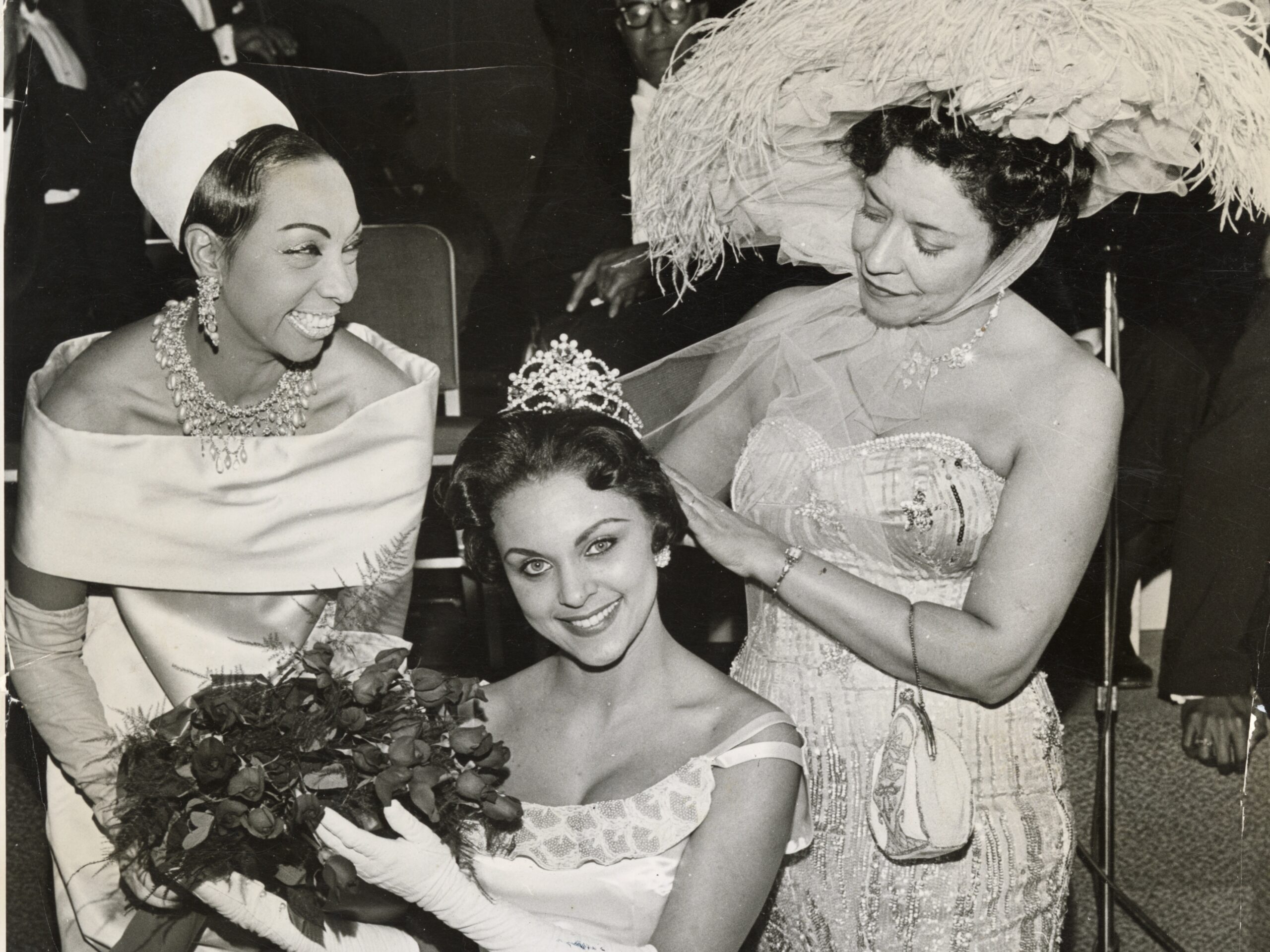
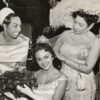

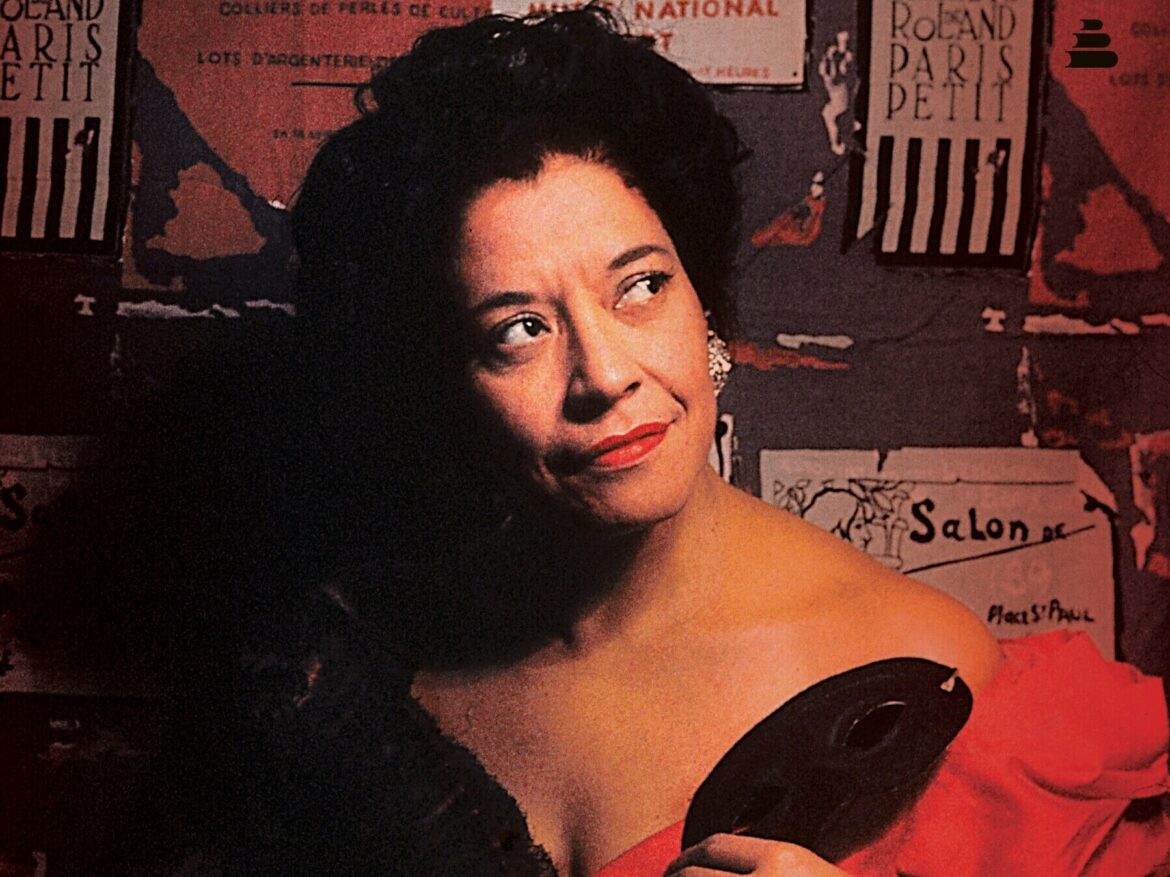
9(MDQ0ODU2MzU2MDE1NTM3MTIwMjFiMDhjNA000))
